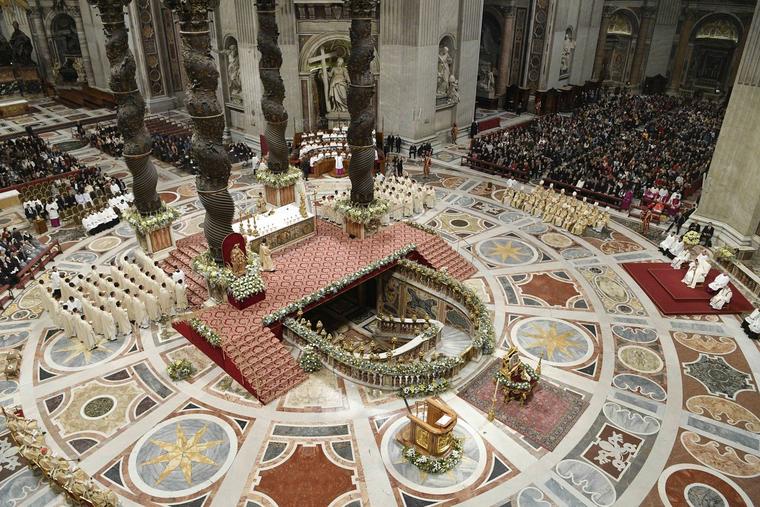- Feb 5, 2002
- 166,628
- 56,258
- Country
- United States
- Faith
- Catholic
- Marital Status
- Married
- Politics
- US-Others
COMMENTARY: The Mass confusion of Christmas 2023 tells us something about how evening Masses have contributed to the secularization of Catholic culture.
That was quite a foofaraw. Christmas on a Monday!
Mass on Sunday (or Saturday) for the Fourth Sunday of Advent and then Mass again(!), on Sunday (or Monday) for Christmas. It seemed to create a lot of bother.
And it will happen again for the octave of Christmas, Jan. 1, 2024, the solemn feast of Mary, Mother of God. That too, like Christmas, is a holy day of obligation and it is a Monday, so all of the same considerations apply. Or not.
The whole business of Monday holy days was so exhausting that in 1991 the U.S. bishops decidedthat if Mary, Mother of God, the Assumption or All Saints fell on Saturday or Monday, then the obligation to attend Mass would be abrogated. So this coming Sunday/Monday there will be no foofaraw.
How did Catholics down the generations handle the onerous Sunday/Monday combination? Very simply. There were no evening Masses; the reforms of Pope St. Pius V in 1570 disallowed Masses after noon. So you went to Mass on Sunday morning for Sunday and then Monday morning for the holy day.
Easy.
Evening Masses were introduced more recently. Even the Mass of the Lord’s Supper and Easter Vigil were celebrated, odd as it may now seem, in the morning until Pope Pius XII reformed the Holy Week liturgies. In the 1960s the prohibition on evening Masses was eliminated.
The festive foofaraw of Christmas 2023 tells us something about how evening Masses have contributed to the secularization of Catholic culture.
Continued below.

 www.ncregister.com
www.ncregister.com
That was quite a foofaraw. Christmas on a Monday!
Mass on Sunday (or Saturday) for the Fourth Sunday of Advent and then Mass again(!), on Sunday (or Monday) for Christmas. It seemed to create a lot of bother.
And it will happen again for the octave of Christmas, Jan. 1, 2024, the solemn feast of Mary, Mother of God. That too, like Christmas, is a holy day of obligation and it is a Monday, so all of the same considerations apply. Or not.
The whole business of Monday holy days was so exhausting that in 1991 the U.S. bishops decidedthat if Mary, Mother of God, the Assumption or All Saints fell on Saturday or Monday, then the obligation to attend Mass would be abrogated. So this coming Sunday/Monday there will be no foofaraw.
How did Catholics down the generations handle the onerous Sunday/Monday combination? Very simply. There were no evening Masses; the reforms of Pope St. Pius V in 1570 disallowed Masses after noon. So you went to Mass on Sunday morning for Sunday and then Monday morning for the holy day.
Easy.
Evening Masses were introduced more recently. Even the Mass of the Lord’s Supper and Easter Vigil were celebrated, odd as it may now seem, in the morning until Pope Pius XII reformed the Holy Week liturgies. In the 1960s the prohibition on evening Masses was eliminated.
The festive foofaraw of Christmas 2023 tells us something about how evening Masses have contributed to the secularization of Catholic culture.
Continued below.

Letting Christmas Be Christmas — and the Lord’s Day Be the Lord’s Day
COMMENTARY: The Mass confusion of Christmas 2023 tells us something about how evening Masses have contributed to the secularization of Catholic culture.
